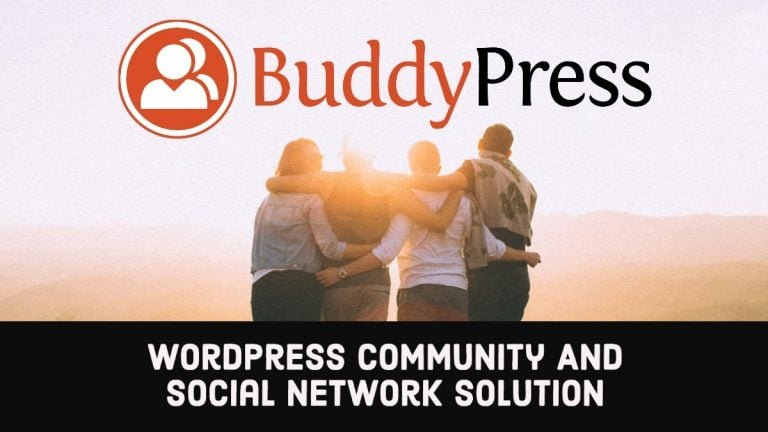Embarking on the journey to sell your online courses can be both exhilarating and daunting, especially if you’re at the starting line of your digital teaching career. But fear not, aspiring educator! The key to unlocking your courses’ potential lies in choosing the right membership model. Let’s explore some innovative strategies that can help you build a thriving online learning community, ensuring your courses sell and create lasting impacts.
Table of Contents
Toggle1. The All-You-Can-Learn Buffet
The All-You-Can-Learn Buffet model transforms the concept of online education into a vast, accessible library akin to popular streaming services. This approach is ideal for learners who seek a wide range of topics and prefer to learn at their own pace. To implement this model effectively, focusing on user experience is crucial, particularly in how members navigate your course library.
Key Features of the All-You-Can-Learn Buffet:
- Unlimited Access: Members gain entry to an extensive library of courses covering various subjects. This access encourages exploration and continuous learning, much like having an entire library at one’s fingertips.
- Dynamic Content Library: The course library should be ever-expanding, with new content added regularly to keep the platform fresh and engaging. This not only helps in retaining existing members but also attracts new ones.
- User-Friendly Navigation: The platform must have intuitive navigation, given the vast content. This can be achieved through well-organized categories, tagging systems, and a robust search function that allows users to filter content based on their interests, skill level, and other criteria.
- Personalized Learning Paths: Implementing quizzes or assessment tools to guide learners to courses that match their skill level or career goals can enhance the learning experience. Personalized recommendations based on past course engagement can also direct learners to new areas of interest.
- Community Features: Incorporating community features such as discussion boards or group projects can enhance the learning experience. These features allow learners to interact, share insights, and learn from one another, adding value beyond the courses themselves.
- Progress Tracking: Offering tools for members to track their learning progress, set goals, and earn achievements or certificates can motivate learners and provide a sense of accomplishment.
Implementing the Model:
- Platform Choice: Select a platform that supports a subscription model and allows for creating a comprehensive course library with the needed functionality for navigation and personalization.
- Content Strategy: Develop a content strategy that ensures a steady stream of new, high-quality courses. Consider involving various experts or instructors to cover a broad range of topics.
- Marketing and Retention: Use targeted marketing to attract learners interested in continuous, self-directed learning. Implement retention strategies such as regular updates, community events, or exclusive content to keep members engaged.
- Feedback Loop: Establish mechanisms for collecting and acting on member feedback to improve the platform and content continually.
By focusing on these elements, the All-You-Can-Learn Buffet can effectively deliver value to learners who seek flexibility and variety in their educational pursuits. This model democratizes access to knowledge and fosters a community of continuous learners, making it a compelling option for course creators aiming to make a significant impact in online education.
Also Read: Yoast SEO 6.3 Clean-up and Enhancements
2. The Tangible Touch: Subscription Boxes Meet Digital Learning
The Tangible Touch model ingeniously merges the excitement of physical subscription boxes with the intellectual stimulation of digital learning, creating a unique and engaging educational experience. This approach is particularly effective in today’s digital age, where the physical and digital realms increasingly intersect, offering learners a multisensory journey through their educational endeavors.
Key Features of The Tangible Touch:
- Physical Subscription Boxes: Each month, members receive a carefully curated box containing items related to the course content. Depending on the course’s focus, these items could range from books and stationery to specialized tools and kits.
- Complementary Digital Content: Alongside the physical items, subscribers can access exclusive online training or mini-courses designed to complement the physical items. This dual approach reinforces learning, as the physical items serve as tangible aids or reminders of the digital content.
- Engagement and Anticipation: The monthly arrival of a new box creates a sense of anticipation and continuous engagement, encouraging learners to stay involved with the course material over an extended period.
- Deepened Material Connection: The physical items help deepen the learner’s connection to the material. Holding a physical object related to the course content can enhance understanding and retention, making the learning experience more memorable.
- Brand Connection: This model strengthens the learner’s connection to your brand. The excitement of receiving a physical package and the quality and relevance of the items and courses can foster a positive association with your educational platform.
Implementing the Model:
- Content and Box Curation: Carefully plan the contents of each subscription box to ensure they align with the digital course material. The items should be relevant and of high quality to reflect the value of your brand and courses.
- Logistics and Distribution: Establish a reliable logistics and distribution system to ensure timely and efficient delivery of the subscription boxes to your learners. Consider partnering with experienced fulfillment services if necessary.
- Integrated Learning Design: Design your digital courses to integrate with the physical items seamlessly. This could involve assignments that require using the items or interactive sessions where learners share how they’ve used the items in their learning process.
- Community Engagement: Encourage learners to share their experiences with the subscription boxes and digital courses on social media or within your platform’s community. This not only enhances engagement but also provides valuable feedback for future curation.
- Marketing and Communication: Leverage the unique appeal of this model in your marketing efforts. Highlight the synergy between your courses’ physical and digital components to attract learners looking for a more immersive and interactive learning experience.
The Tangible Touch model offers an innovative way to enrich the digital learning experience with the joy and engagement of receiving physical items. By thoughtfully integrating the two, you can create a learning journey that captivates, educates, and retains learners, setting your courses apart in the crowded online education market.
Also Read: A Guide to WordPress SEO: 13 WordPress SEO Best Practices
3. Join the Club: Exclusive Discounts Await
The Discount Club model is an enticing strategy that leverages the universal appeal of savings to create a compelling membership offering. By providing exclusive discounts on courses or related products, you enhance the value of your membership and cultivate a community atmosphere that rewards engagement and loyalty. This model can be particularly effective in competitive markets, where distinguishing your offerings can be challenging.
Key Features of the Discount Club Model:
- Exclusive Discounts: Members enjoy special pricing unavailable to non-members, making the membership valuable. Discounts can apply to various offerings, from courses and workshops to eBooks and merchandise.
- Tiered Membership Levels: Introducing tiers within your membership structure allows for greater flexibility and customization. Higher tiers might offer steeper discounts, additional perks, or access to exclusive content catering to different segments of your audience.
- Sense of Exclusivity: The allure of ‘members-only’ pricing fosters a sense of belonging and exclusivity. Members feel like part of an inner circle, which can enhance loyalty and encourage word-of-mouth referrals.
- Encouragement of Continuous Learning: By making courses more financially accessible, you encourage members to enroll in more courses over time, fostering a culture of continuous learning and development.
- Increased Accessibility: Strategic discounting can make your offerings more accessible to a broader audience, breaking down financial barriers to education and expanding your market reach.
Implementing the Model:
- Define Your Discount Strategy: Carefully consider the structure of your discounts. Ensure they’re attractive enough to entice memberships while maintaining your courses’ perceived value.
- Communicate Value Clearly: Articulate membership benefits to potential members, highlighting not just the discounts but also the added value they receive through access to exclusive content, communities, or other perks.
- Leverage Technology for Personalization: Use membership management software to create personalized experiences for different tiers, tracking member preferences and tailoring offers accordingly.
- Monitor and Adjust: Keep a close eye on membership engagement and course enrollment rates. Be prepared to adjust your discount offerings based on member feedback and participation trends.
- Market Aggressively: Use targeted marketing campaigns to highlight the cost savings and exclusive benefits of joining your Discount Club. Testimonials, case studies, and user-generated content can be powerful tools in demonstrating the tangible benefits of membership.
By thoughtfully integrating the Discount Club model into your course offerings, you can create a compelling value proposition that attracts new members and nurtures a loyal community of learners. The key to success lies in balancing the allure of discounts with maintaining high-quality, valuable content that keeps members coming back for more.
4. Building Communities: Beyond the Classroom
The Online Community Membership model transcends the conventional boundaries of digital learning by creating vibrant, interactive spaces where learners don’t just consume content but actively engage with it and each other. This approach fosters members’ sense of belonging and camaraderie, turning the educational platform into a thriving digital sanctuary for shared growth and discovery.
Key Features of Building Communities:
- Interactive Forums: By incorporating forums into your platform, you provide a space for learners to ask questions, share insights, and discuss course content. This peer-to-peer interaction enriches the learning experience and can lead to deeper understanding and retention of material.
- Mastermind Groups: Small, focused mastermind groups within the larger community offer members personalized support and accountability. These groups can be centered around specific topics, goals, or levels of expertise, facilitating targeted growth and collaboration.
- Member Directories: Implementing a member directory enhances networking opportunities within the community. Members can find and connect with peers with similar interests, challenges, or professional backgrounds, fostering meaningful connections and collaborations.
- Regular Community Events: Hosting live Q&A sessions, webinars, or virtual meetups can significantly boost community engagement. These events provide opportunities for real-time interaction with instructors and fellow learners, adding a dynamic element to the digital learning experience.
- Shared Learning Projects: Encouraging members to collaborate on projects can lead to innovative solutions and a deeper sense of community. Collaborative projects enhance learning and build teamwork skills and professional relationships.
Implementing the Model:
- Choose the Right Platform: Select a platform that supports robust community features, such as forums, group chats, and event management. The platform should be intuitive and user-friendly to encourage active participation.
- Cultivate an Inclusive Culture: Set the tone for your community by fostering an inclusive, respectful environment. Establish clear community guidelines and encourage positive, supportive interactions among members.
- Encourage Active Participation: Actively participate in the community and encourage your instructors or team members to do the same. Leading by example can inspire more members to engage and contribute.
- Highlight Success Stories: Share success stories and testimonials from community members to highlight the tangible benefits of active participation. Recognizing member achievements can motivate others and strengthen the sense of community.
- Provide Value Beyond Courses: Regularly introduce content and activities that provide value beyond the core course material. This could include industry insights, career development resources, or personal growth content.
By prioritizing community building, you transform your educational platform into a vibrant ecosystem where learning is about acquiring knowledge and connecting, sharing, and growing together. A strong, engaged community enhances the value of your courses and lays the foundation for lasting relationships and a loyal customer base.
Also Read: The Impact of Cloud Technologies on WordPress Security
5. The Power of Bundles: More is Merrier
The Power of Bundles model is a strategic approach to the course and product offerings that leverages the appeal of getting more value for a collective price. Packaging-related courses and products together will streamline your students’ learning journey and significantly enhance the attractiveness of your offerings. This model is akin to giving your learners a comprehensive toolkit tailored to their needs, making it a powerful incentive for sign-ups and fostering a community of engaged learners.
Implementing The Power of Bundles:
- Curate Thoughtfully: Select courses and products that complement each other well and meet the comprehensive needs of your learners. The combination should feel like a natural fit, covering a broader spectrum of the subject matter or providing a step-by-step progression.
- Price Smartly: Set a collective price that underscores the bundle’s value without undervaluing individual components. The deal should be perceived as advantageous, encouraging learners to opt for the bundle over individual purchases.
- Market Creatively: Highlight the benefits and synergies of the bundle in your marketing campaigns. Use testimonials, case studies, or success stories to showcase the effectiveness and value of the bundled offerings.
- Update and Refresh: Keep the bundles updated with the latest content and occasionally refresh the combinations to keep the offerings dynamic and appealing to new and existing learners.
Also Read: Best E-commerce Protection Platforms In 2024
Launch Checklist:
- Identify Your Niche: Deeply understand your target audience’s specific needs, challenges, and aspirations to tailor your bundled offerings effectively.
- Choose Your Model: Decide on a membership model that complements your content and teaching style. Starting with one model and expanding as you grow allows adaptability and scalability.
- Create Compelling Content: Develop engaging, high-quality content that resonates with your audience and fits seamlessly within your chosen membership model.
- Build Your Platform: Opt for a reliable platform that can support your membership and bundle model, ensuring a smooth and enjoyable user experience from start to finish.
- Market Your Membership: Leverage various marketing channels such as social media, email marketing, and content marketing to promote your unique bundled offerings.
- Foster Community Engagement: Encourage interaction within your community through forums, live sessions, and social media, enhancing the learning experience and building a vibrant community.
- Gather Feedback and Iterate: Actively seek and incorporate feedback from your members to continuously improve your offerings, ensuring they remain relevant and valuable.
Conclusion
Embarking on this journey to sell your courses through a membership model, especially one that leverages the power of bundles, is about creating an enriching ecosystem where learners gain knowledge and feel part of a supportive community. By carefully selecting and packaging your courses, you can provide immense value beyond individual courses, fostering a loyal and engaged learner base. So, leap confidently and embark on this exciting educational adventure!
For more detailed insights into each membership model and examples to inspire your journey, consider exploring resources like AccessAlly’s guide to membership models, Podia’s exploration of community models, and Kajabi’s overview of content and coaching memberships.
Interesting Reads:
Yoast SEO WordPress Plugin: The Best
Yoast SEO vs Premium SEO Pack vs Rank Math: Which WordPress SEO Plugin Is Best?








